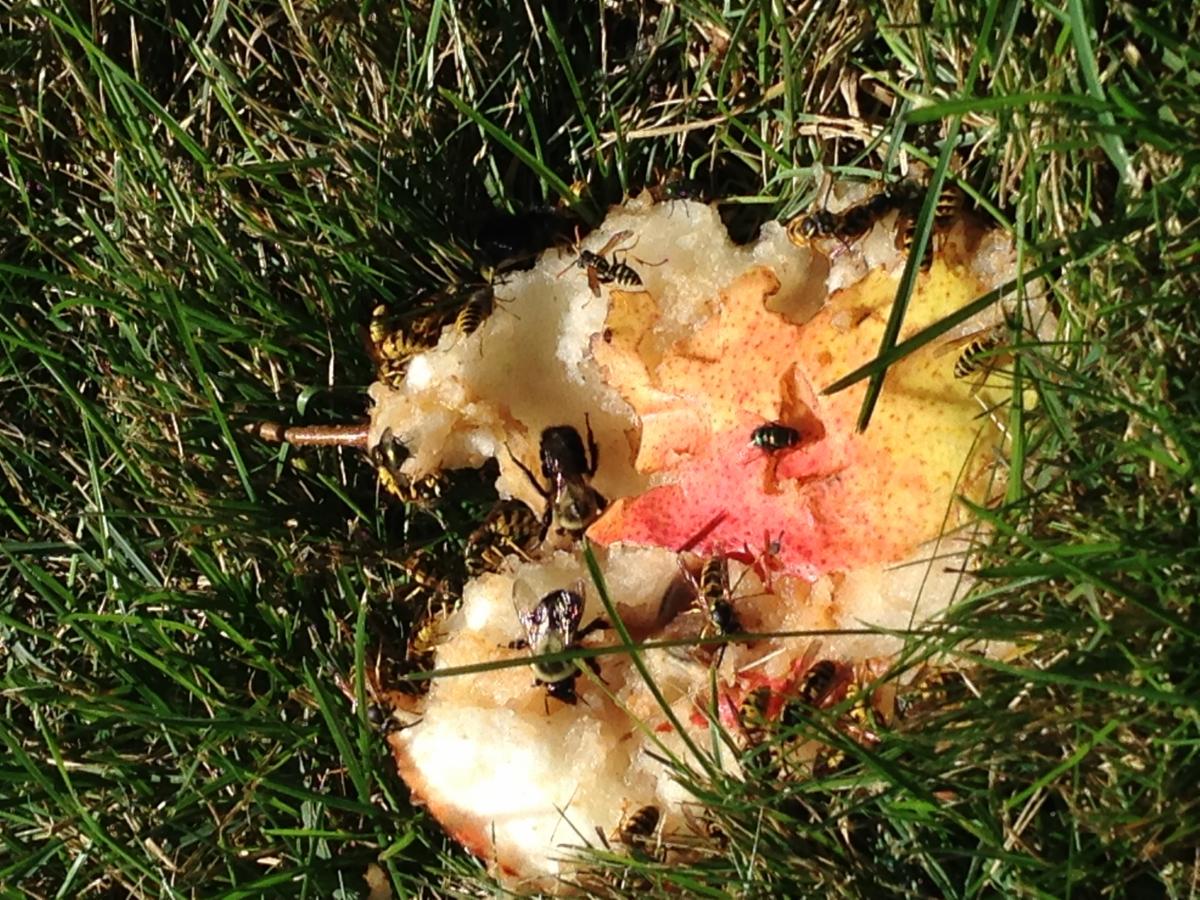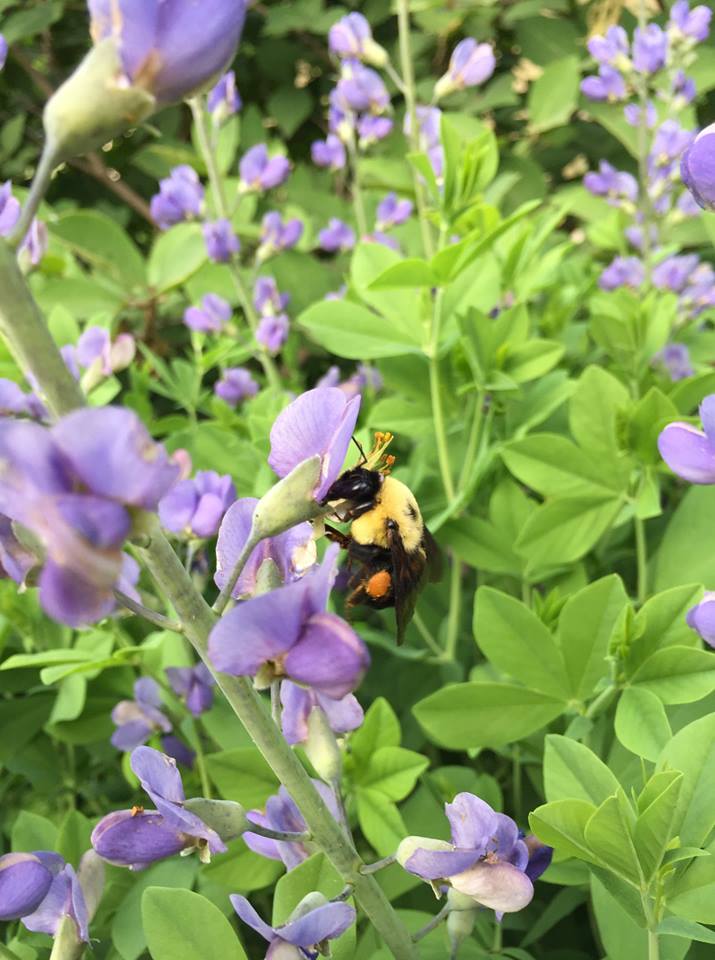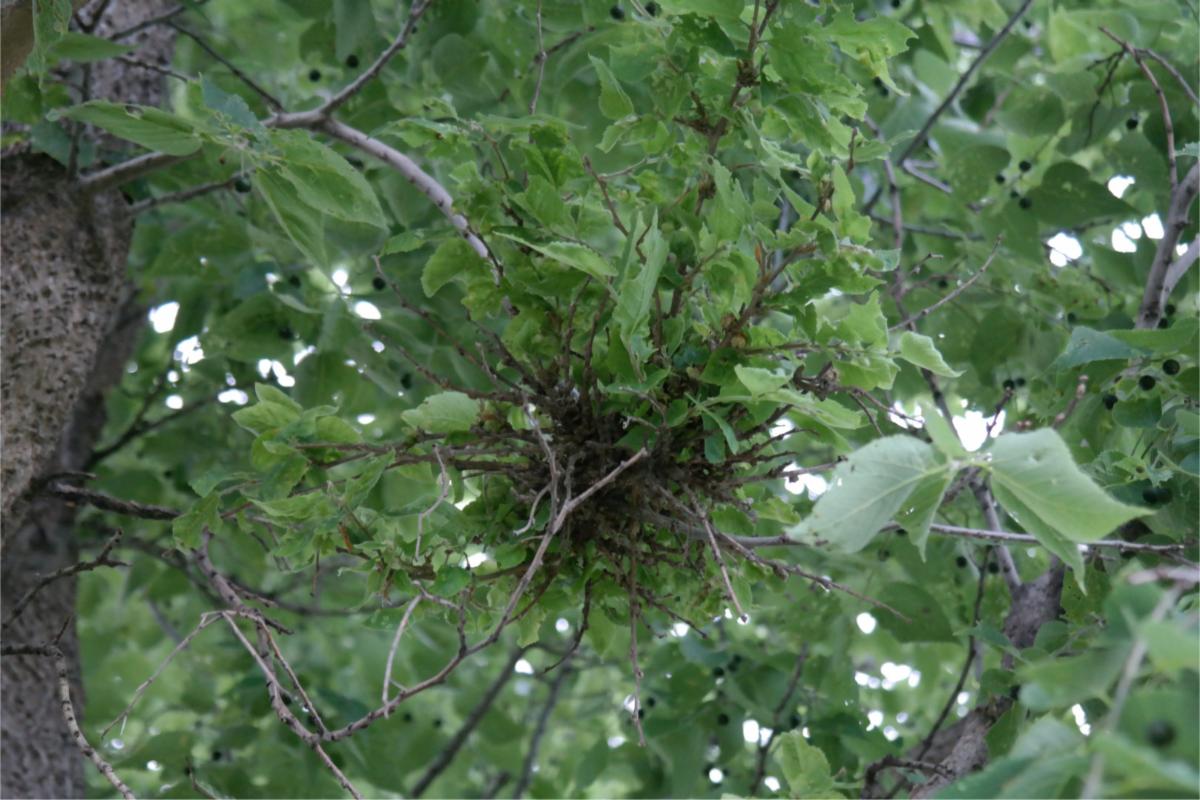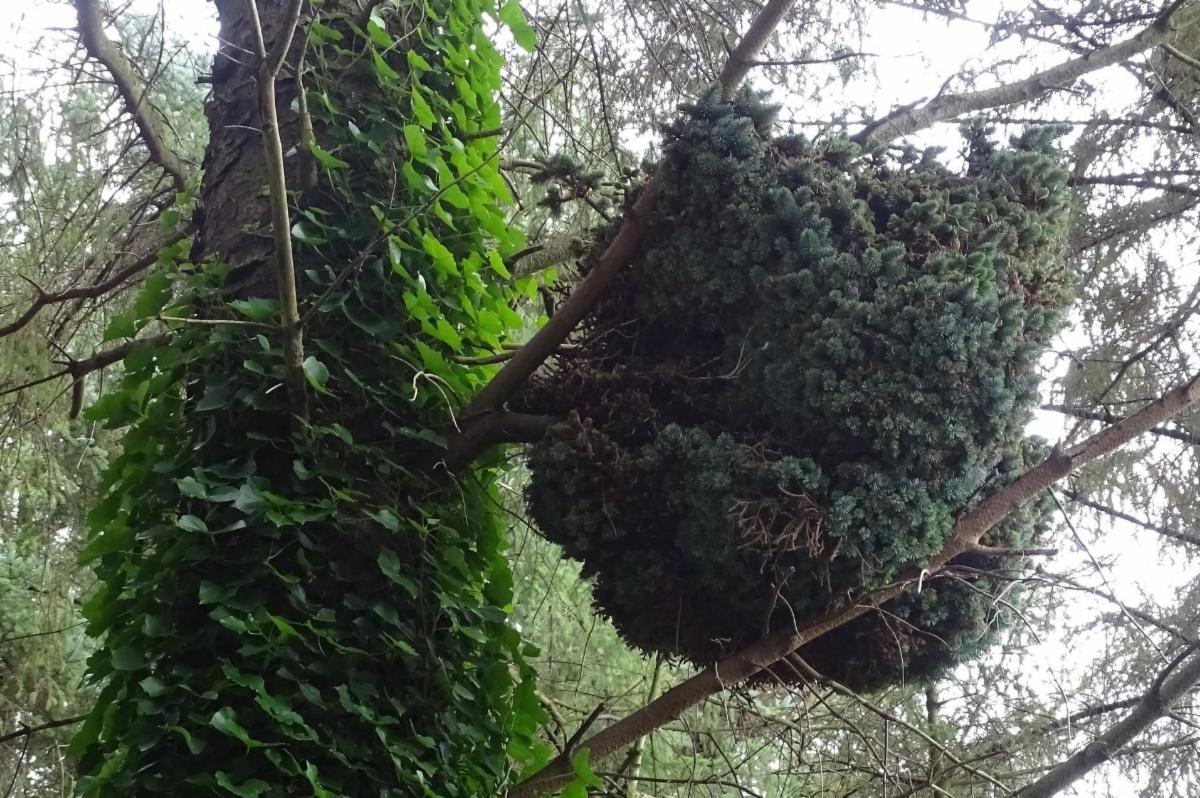4 large baking apples, like Honeycrisp
1/2 lemon
2 to 3 dried apple rings, cut into bits
4 pieces crystallized ginger
3 to 4 teaspoons honey
1 tablespoon butter
1 cup apple cider
Whipped cream for serving
Cinnamon, for dusting
Heat oven to 375. Line a baking sheet with foil and place 10-pie plate on top. Cut the tops off each apple, reserve. Core the apples, making sure you do not cut all the way to the bottom. Cut away and reserve about ½ inch peel around the tops of apples. Rub the apples with lemon juice.
Fill each apple with an equal amount of dried apple and ginger. Pour 1/2 teaspoon honey over the dried fruit in each apple. Cut the butter into 4 pieces, and top each apple with a pat. Pop the caps back on the apples. Transfer the apples, lemon wedges and reserved peels into the pie dish; pour in the cider and stir in 1 to 2 teaspoons honey.
Bake the apples, basting occasionally with the juices for 50 to 70 minutes. Cool for 15 minutes. Serve with whipped cream and cinnamon
|
|
|
The Bugs We Can't Live Without
|
|
| |
|
Most of us see insects as a buzzing, stinging nuisance to be slapped, sprayed or eradicated. But if you value life as we know it, you should fear for their survival. Despite insect's 479-million-year track record, they are starting to struggle.
Data suggests that while we humans have doubled our population in the past 40 years, the number of insects has been reduced by almost half, according to a 2014 report in the journal Science. In Germany, the accumulated biomass of all insects trapped in more than sixty locations nationwide has plummeted by 75 percent in just thirty years. The National Academy of Sciences reports 10 to 60 times less insect numbers between 1976 and 2012 (It's easy to read that number as 60 percent less, but it's sixtyfold less). These losses are already rippling through the ecosystem, with serious declines in the number of lizards, birds and frogs.
Insect populations are falling for a number of interconnected reasons. Most important is our ever-more-intensive use of land for agriculture and development, which leaves fewer intact habitats, from rain forests to flower meadows. On top of that, climate change, pollution and pesticides, as well as the movement of species to non-native environments around the world, have had a destructive cascading effect on local ecosystems and their insects. Even increased use of artificial light has an impact on some species.
At what cost? Bugs are vital to the decomposition that keeps nutrients cycling, soil healthy, plants growing and ecosystems running. This role is mostly invisible, until suddenly it's not. Like janitors in offices or apartment buildings, they do a lot to clean out the trash. It might not be a glamorous job, but the processes of decomposition and decay are critical to life on earth.
The most compelling reason to care about insects is self -interest. Insects sit at the base of the food chain, fodder for innumerable other critters. They also pollinate three-quarters of our food crops. One survey estimated that insect's contribute nearly $577 billion to the world economy through agricultural activity.
To stabilize insect populations, we need to find ways to take care of their habitats, whether in rain forests or cities and suburbs. Many species cannot survive in a transformed modern landscape. We can achieve a great deal with belts of trees and bushes alongside streams in residential areas; green shoulders and hedges along roads; and borders of wildflower meadows along the edges of fields. In forests, we need to keep old, dead trees to house their requisite share of insect ecosystems.
We humans have long taken the free services of insects for granted. Taking care of them is a form of life insurance for our children and grandchildren. If human beings want a place here, we'd best make nice with our six-legged friends.

Ninety percent of all plant production is left lying on the ground. The patient chomping of insects on rotten remains not only clears the ground of dead plants and animals, it returns nutrients to the soil. Without it, new life could not grow.

Pollination involves not just bees, but 20,000 different species of flies, ants, beetles, and other insects.

Although they resemble insects, millipedes are arthropods. Insects have six legs, four wings and two antennae.
North America's overall bird population has dropped 29% since 1970, with about 3 billion fewer birds now than nearly 50 years ago. Photo credit: Stephanie Town.
For more information on disappearing insects. |
|
Most Magical Witch's Broom
|
|
All around the world, forests and woodlands are culturally associated with magic and mythology. This is reflected in the names of some woodland features - dryad's saddle, for instance, witch's brooms and gingerbread houses. Our ancient ancestors, wandering into wooded areas, must have been wary of how much was hidden from them and how much could not be understood. Gone is the age of myths and magic, replaced by science, of course.
The term 'witch's broom' comes from the German word Hexenbesen, which means to bewitch (hex) a bundle of twigs (besom). But there's another type of witch's broom. This one grows from trees. It's a tightly-packed mass of shoots, a deformity caused by organisms that have invaded the tree.
The result is a ball-like tangle of dense twigs looking almost like a round bird's nest or a witch's broom.
There are many causes of witch's brooms, including fungi, insects, mistletoe, mites, and viruses.
The infection stimulates the production of a plant hormone that interferes with the ability to regulate the number of shoots on the twig or branch. This causes shoots to proliferate wildly, producing a shrubby little tree within a tree.
Many species of trees and shrubs, both hardwoods and softwoods, are susceptible to brooming. I have seen them on spruce, black walnut, lilacs, hackberry, fir, serviceberry, and other species.
Some witch's brooms have devastating economic effects. Witch's broom disease found its way to Brazil's cocoa tree plantations that produce chocolate. It invades trees through stomata (the puckered holes on leaves through which trees "breathe"). Once inside, it begins to consume tree tissue and alter tree growth, causing the tree to grow grotesque broom-shaped tumors. With time and the passage of seasons, the trees with brooms blacken and produce pink mushrooms from which millions of spores are released into the air, out toward other trees. Because the fungus's spores are spread by wind, it's expensive to control and can have a drastic effect on production.
But there's a plus to witches' brooms. Since each is genetically unique, some horticulturists collect them in hopes of perpetuating the genetic disruption caused in the parent tree, to create a new dwarf tree. It's not a hobby for the fearful -you have to climb the tree to harvest the broom.
Currently, there are no effective treatments for witches' broom; pruning out brooms is the only recommended practice. Unfortunately, this will not prevent them from coming back. However, much you know about witch's broom pathology, there is still something magical -scientifically speaking- about the forest.

Many people are familiar with the brooms that appear so commonly on trees of hackberry. These are thought to be induced by mites in association with a fungus.
Dedicated conifer collectors are always keeping an eye out for witch's brooms in the trees for the potential of discovering what may be a really great new dwarf conifer for the garden.

Most witch's brooms, however, don't appear to weaken their host plant. Many trees live with them - sometimes dozens of them - for decades. These twiggy masses are another example of the intimacy of the relationships among different groups of organisms that have been living together for a very long time. Photo credit: Duncan Slater
So, the next time you find yourself wandering through a forest, look up. You see may see this Witch's broom on a Sequoia redwood. Photo credit: Duncan Slater
For more information on Witch's Broom
|

Thanks for reading.
Happy Planting!
Faith Faith Appelquist President & Founder
|
|
|